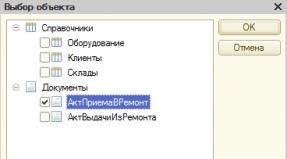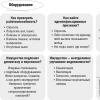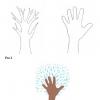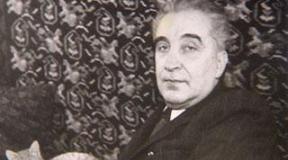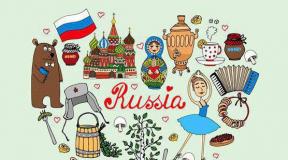Mircea Eliade. History of faith and religious ideas. History of faith and religious ideas History of faith and religious ideas
Having not yet finished reading the first volume, you begin to understand what the author meant when he wrote in the preface that he wanted to create a very comprehensive book, but so far it has turned out to be a three-volume book. Because even you already see that it could have been written “not along, but across,” i.e. not so much chronologically as analytically. Only this would have required some more time, and the researcher no longer had time.
But analytical power still breaks through constantly in individual remarks throughout the text (look, reader, there is a flood in Gilgamesh, but in the Bible - you yourself know this - there is also a flood!). And sometimes you even rejoice that they didn’t hint to you here, but you yourself realized that in the religious disputes between Luther and Erasmus you come across the same motive that you were told about two volumes ago in connection with Zarathustra - the motive of freedom to choose between good and evil and human responsibility for this choice.
In the introduction, Eliade points out that he has attempted to identify and describe key moments in the history of religious ideas. While reading, I concentrated on the moments that were most interesting to me and do not pretend to be an objective selection.
Victim
The most interesting volume for me was the first volume. The beginning is always an interesting thing. And here there are two beginnings at once - the beginning of a magnificent book and the beginning of faith. The man straightened up - and a space opened up to him, ordered around a certain center. He began to hunt and a special system of relations between hunter and prey was born, their “mystical solidarity”, implicated in the fact of murder, in blood. The hunter and the hunted are even under the protection of the same deities. Sacrifice is the equivalent of killing an animal in a hunt. Sacrifice passes through different beliefs, undergoing interesting modifications. In India, for example, they will come up with the idea that the gods achieved immortality not only with the help of sacrifices, but also with the help of asceticism and tapas - ritual warming up, heat. And this warming up can also be achieved through holding the breath.
Cult of the dead
Death, its interpretation, the attitude towards it and what will happen after it - this is, perhaps, where faith began and what no religious teachings can ignore to this day. Even in the Mesolithic era, with the discovery of agriculture, the cult of fertility and the cult of the dead were closely linked. According to food plant myths, what one eats grows from the killed and dismembered and buried body of a deity.
Megalithic complexes also testify to the importance of the cult of the dead. Dolmens, as Eliade writes, are essentially burial places. One of the chapters on megaliths is called “The Stone and the Banana.” In it, Eliade cites one Indonesian myth about the gifts of God: when God lowered a stone to people on a rope, they were indignant. But they happily accepted a banana as a gift. To this, God answered the people: “Your life will be like this fruit. And if you chose a stone, you would be eternal.”
Both gods and heroes of different cultures are connected with that infernal world - Ishtar and Orpheus descend into the kingdom of the dead, Zarathustra was thrown onto the funeral pyre, the god Mara (the embodiment of death) attacked Buddha and tempted him. Shamans, being in ecstasy, travel to another world and then talk about their journey.
Knowledge
The attitude towards knowledge in different teachings is very different. For Gnostics, knowledge is saving. Liberation can be achieved by learning who we were and what we have become, where we have been and where we have been “thrown”. Therefore, amnesia, sleep, captivity, torpor are typical Gnostic symbols. In Hinduism, suffering can be overcome through awakening, which is given not by experience and intellect, but by insight. The Spirit must be separated from the Self, because the Spirit does not suffer. The meaning of creation is to help liberate the spirit. Psycho-mental vortices - vortexes of consciousness - interfere with a person. It is necessary to break the subconscious-conscious connection. The attitude of Hinduism towards knowledge is well demonstrated by the parable of the man pierced by an arrow. He is taken to the doctor, and along the way he shouts all the time that he will not let the arrow be taken out until they tell him what kind of arrow it is, why it hit him, what it is made of, etc. He dies without knowing the answers to all these questions.
The idea of the impossibility of recognizing the sacred is also present in one of the central themes of Judaism - the sacrifice of Isaac. Eliade writes that Abraham did not understand the meaning of the act and that this example is then interpreted many times in history. For example, Kierkegaard renounces his bride in the hope that in some incomprehensible way she will be returned to him.
What about Paradise Lost? In the Garden of Eden grow the Tree of Life (which is guarded by the serpent) and the Tree of the Knowledge of Good and Evil. What does the serpent do? He just does his job well (guarding the symbol of life and eternal youth).
For the Greeks, everything is generally predetermined by fate, and from the Judeo-Christian point of view, the Greek religion is pessimistic. Man is short-lived, and nothing good awaits him in the afterlife - a painful and miserable existence in the kingdom of gloomy Hades. Therefore, you need to live in the present.
Disagreement and syncretism
Religious teachings cannot exist completely isolated from each other. The Greek Aphrodite is clearly of Eastern origin, because her cult contains a number of Asian elements (for example, there are slaves in her temple). The son of Zeus, Alexander the Great, spreads Greek culture to the world he gathered. At a certain stage in history, Buddhism spreads far to the west, and when the troops of Alexander the Great invaded India, Buddhism came into contact with Hellenic culture. The Hellenistic era is generally characterized by syncretism. And if Christianity were stopped, then - as Eliade writes - the world would become Mithraic. The mysteries of Mithra penetrated all the provinces of the Roman Empire. They combined Iranian heritage with Greco-Roman syncretism, astrology, eschatology and solar cults.
But besides the inevitable interpenetration of beliefs, there was also a reverse process. Thus, during the era of captivity, Judaism was strongly influenced by Hellenistic culture, and then their confrontation occurs. Any heresies and apocrypha are the result of disagreements. The cross, sacred to a Christian, is denied in Bogomilism, because for Bogomilians the cross is an instrument of the painful execution of Christ.
Finally
One of the Sumerian myths says that the archetypes of Babylonian cities were created in the constellations. And then the gods handed over a map to the earth. I don’t know in what form this card reached people, whether they were able to use it and, if so, how well. But at the moment I feel a little like a Babylonian city planner.
History of faith and religious ideas. Volume I. From the Stone Age to the Eleusinian Mysteries.
History of faith and religious ideas. Volume II. From Gautama Buddha to the triumph of Christianity.
History of faith and religious ideas. Volume III. From Mohammed to the Reformation.


Transl. from fr. - M.: Criterion, 2002. vol. I - 464 p., vol. II - 512 p., vol. III - 352 p.
The last three-volume work of the Romanian philosopher and writer Mircea Eliade (1907-1986) sums up his entire life in science.
The first volume covers the history of the religious views of mankind, from the Stone Age to the Eleusinian Mysteries.
The second volume of “The History of Faith and Religious Ideas” is devoted to perhaps the most dramatic and important period in the world history of religions. Its title - “From Gautama Buddha to the Triumph of Christianity” - naturally does not cover the ecumenical breadth of the material presented in the book: ancient China and Hellenistic Egypt, European barbarians (Celts and Germans) and Iranian dualism - the fifteen chapters of the second volume seem to contain all the richness of the religious development of the Old World.
The third volume, following the designated theme, also includes additional chapters on the religions of ancient Eurasia, Tibet, magic, alchemy and the Hermetic tradition.
Volume I.
Format: pdf/zip
Size: 4.0 MB
/Download file
![]()
Volume II.
Format: pdf/zip
Size: 6.2 MB
RGhost
Volume III.
Format: pdf/zip
Size: 2.2 MB
/Download file
Or in HTML version, which looks good and seems much more convenient(unzipped into a folder with several files - the initial file is index ).
html/rar: VolumeI(33 6Kb); Volume II(378Kb); Volume III(240Kb) .Volume I. From the Stone Age to the Eleusinian Mysteries.
Introduction 5
Chapter I. IN THE BEGINNING... MAGICAL-RELIGIOUS BEHAVIOR OF MAN IN THE PALEOLITHIC ERA 9
§1. Orientatio. Tools for making tools. "Taming" fire 9
§2. “Closedness” of prehistoric monuments 11
§3. Symbolic meaning of burials 14
§4. Conflicting Opinions About Bone Vaults 18
§5. Rock painting: images or symbols? 21
§6. Presence of a woman 24
§7. Rituals, thought and imagination among Paleolithic hunters 26
Chapter II. THE LONGEST REVOLUTION: THE DISCOVERY OF AGRICULTURE - MESOLITHIC AND NEOLITHIC 32
§8. Paradise Lost 32
§9. Labor, technology and imaginary worlds 35
§10. Legacy of Paleolithic hunters 37
§eleven. Domestication of food plants: myths of origin 39
§12. Woman and growth. Sacred space and periodic renewal of the world 42
§13. Neolithic religions of the Middle East 46
§14. Spiritual structure of the Neolithic 49
§15. Religious Context of Metallurgy: Iron Age Mythology 53
Chapter III. RELIGIONS OF MESOPOTAMIA 57
§16. “History begins in Sumer...” 57
§17. Man and his gods 60
§18. First Flood Myth 62
§19. Descent into Hell: Inanna and Dumuzi 64
§20. Sumerian-Akkadian synthesis 67
§21. Creation 69
§22. The sacred nature of the Mesopotamian ruler 72
§23. Gilgamesh's Quest for Immortality 75
§24. Fate and the Gods 78
Chapter IV. RELIGIOUS IDEAS AND POLITICAL CRISES IN ANCIENT EGYPT 82
§25. An unforgettable miracle: “For the first time” 82
§26. Theogonies and cosmogonies 84
§27. Duties of an Incarnate God 87
§28. Pharaoh's Rise to Heaven 90
§29. Osiris, the slain god 93
§thirty. Syncopation: anarchy, despair and the “democratization” of the afterlife....96
§31. Theology and politics of “solarization” 99
§32. Akhenaten, or failed reform 101
§33. Final Fusion: Ra-Osiris 104
Chapter V. MEGALITHS, TEMPLES, CEREMONIAL CENTERS: WESTERN EUROPE, MEDITERRANEAN, INDUS VALLEY 109
§34. Stone and banana 109
§35. Ceremonial centers and megalithic structures 112
§36. "The Mystery of the Megaliths" 114
§37. Ethnography and prehistory 117
§38. First cities in India 119
§39. Prehistoric religious concepts and their parallels in Hinduism...120
§40. Crete: sacred caves, labyrinths, goddesses 123
§41. Characteristics of the Minoan religion 126
§42. Continuity of pre-Hellenic religious structures 129
Chapter VI. RELIGION OF THE HITTES AND CANAANITES 132
§43. Anatolian symbiosis and Hittite syncretism 132
§44. "The God Who Hides" 134
§45. Defeating the Dragon 136
§46. Kumarbi and the Supreme Power 137
§47. Conflicts between generations of gods 139
§48. Canaanite Pantheon: Ugarit 141
§49. Baal seizes power and defeats the dragon 144
§50. Palace of Bhaal 145
§51. Baal Faces Mutu: Death and Return to Life 147
§52. Religious views of the Canaanites 149
Chapter VII "WHEN ISRAEL WAS A CHILD..." 152
§53. The first two chapters of Genesis 152
§54. Lost heaven. Cain and Abel 155
§55. Before and after the flood 157
§56. Religion of the Patriarchs 160
§57. Abraham, "Father of Faith" 163
§58. Moses and the Exodus from Egypt 165
§59. “I am that I am” 167
§60. Religion of the Age of the Judges: The First Phase of Syncretism 171
Chapter VIII. RELIGION OF THE INDO-EUROPEANS. VEDIC GODS 174
§61. Protohistory of the Indo-Europeans 174
§62. The First Pantheon and General Religious Dictionary 176
§63. Three-part Indo-European ideology 178
§64. Arias in India 182
§65. Varuna, primary deity: maiden and asuras 185
§66. Varuna: King of the universe and "sorcerer"; Puma and Maya 186
§67. Snakes and Gods. Mitra, Aryaman, Aditi 188
§68. Indra, winner and demiurge 190
§69. Agni, presbyter of the gods: sacrificial fire, enlightenment, intellect 192
§70. God Soma and the drink of “non-death” 194
§71. Two Great Gods of the Vedic era: Rudra-Shiva and Vishnu 197
Chapter IX. INDIA TO GAUTAMA BUDDHA: FROM COSMIC SACRIFICE TO THE HIGHEST IDENTITY “ATMAN-BRAHMAN” 199
§72. Morphology of Vedic rituals 199
§73. Highest sacrifices: Ashvamedha and purushamedha 202
§74. Initiatory structure of rituals: initiation (diksha), initiation to the kingdom (rajasuya)....204
§75. Cosmogony and metaphysics 207
§76. The doctrine of sacrifice in the Brahmanas 210
§77. Eschatology: identification with Prajapati through sacrifice....213
§78. Tapas: technique and dialectics of self-torture 215
§79. Ascetics and “ecstatics”: munis, vratyas 218
§80. Upanishads and spiritual quests of rishis: how to renounce the “fruits” of one’s own deeds? 220
§81. The identity “atman-brahman” and the experience of “inner light” 223
§82. Two modalities of Brahman and the mystery of atman captivated by Matter....226
Chapter X. ZEUS AND THE GREEK RELIGION 229
§83. Theogony and the struggle between generations of gods 229
§84. The triumph and omnipotence of Zeus 231
§85. The myth of the first generations. Prometheus. Pandora 234
§86. Consequences of the first sacrifice 237
§87. Man and fate. The meaning of “joy of being” 239
Chapter XI. OLYMPIANS AND HEROES 243
§88. The Great Fallen God and the Blacksmith-Sorcerer: Poseidon and Hephaestus 243
§89. Apollo: reconciliation of contradictions 246
§90. Oracles and purification 248
§91. From “seeing” to knowing 250
§92. Hermes, "man's companion" 252
§93. Goddesses. I: Hera. Artemis 254
§94. Goddesses. II: Athena, Aphrodite 256
§95. Heroes 260
Chapter XII. ELEUSINIAN MYSTERIES 266
§96. Myth: Persephone in Hades 266
§97. Initiations: public ceremonies and secret rituals 269
§98. Is it possible to penetrate the secret? 271
§99. “Secrets” and “sacraments” 273
Chapter XIII. ZARATHUSTRA AND THE RELIGION OF THE IRANIANS 277
§100. Riddles 277
§101. The Life of Zarathustra: History and Myth 280
§102. Shamanic ecstasy? 282
§103. Revelation of Ahuramazda: man is free to choose between good and evil 283
§104. "Transfiguration" of the world 286
§105. Achaemenid Religion 290
§106. Iranian king and New Year celebration 292
§107. The problem of magicians. Scythians 293
§108. New aspects of Mazdaism: the cult of haoma 295
§109. Exaltation of the god Mithras 296
§110. Ahuramazda and eschatological sacrifice 297
§111. Journeys of the soul after death 300
§112. Resurrection of the Flesh 302
Chapter XIV. RELIGION OF ISRAEL IN THE TIME OF KINGS AND PROPHETS 305
§113. Tsarist power: the apogee of syncretism 305
§114. Yahweh and Creation 307
§115. Job: Test of the Righteous 309
§116. Age of the Prophets 311
§117. Shepherd Amos. Unloved Hosea 314
§118. Isaiah: "the remnant of Israel" will return 316
§119. The vow made to Jeremiah 318
§120. Fall of Jerusalem. Ezekiel Mission 320
§121. The religious value of the “horror of history” 322
Chapter XV. DIONYSUS, OR RETURNED BLISS 325
§122. Appearances and disappearances of the “twice-born” god 325
§123. The archaic nature of some folk holidays 328
§124. Euripides and the orgiastic cult of Dionysus 330
§125. When the Greeks Rediscover the Presence of God 335
Abbreviations 340
Critical bibliography 341
Index 437
Volume II. From Gautama Buddha to the triumph of Christianity.
Chapter XVI. RELIGIONS OF ANCIENT CHINA 7
§126. Religious Beliefs in the Neolithic Age 7
§127. Bronze Age Religion: Sky God and Ancestor Cult 10
§128. Model Dynasty: Zhou 13
§129. Origin and structure of the world 16
§130. Polarity, alternation and reintegration 19
§131. Confucius: the power of Ritual 23
§132. Lao Tzu and Taoism 26
§133. Longevity Technique 32
§134. Taoists and alchemy 36
Chapter XVII. BRAHMANISM AND HINDUISM: THE FIRST PHILOSOPHICAL DOCTRINES AND METHODS OF SALVATION 41
§135. “Everything is suffering...” 41
§136. Methods of higher "awakening" 43
§137. History of the idea and chronology of texts 44
§138. Early Vedanta 45
§139. Spirit in Samkhya Yoga 47
§140. The meaning of Creation is to help liberate the spirit 49
§141. Liberation 51
§142. Yoga: concentration on the subject 53
§143. Yoga techniques 55
§144. The Role of God 58
§145. Samadhi and “miracle powers” 59
§146. Final Liberation 61
Chapter XVIII. BUDDHA AND HIS CONTEMPORARIES 64
§147, Prince Siddhartha 64
§148. Great Care 66
§149. "Enlightenment". Law 68 Prediction
§150. Devadatta's split. The latest converts. Buddha enters parinirvana 70
§151. Religious environment. Ascetic wanderers 72
§152. Mahavira and the “saviors of the world” 74
§153. Teachings and Practices of Jainism 76
§154. Ajivikas and the omnipotence of “fate” 78
Chapter XIX. BUDDHA'S MESSAGE: FROM THE FEAR OF ETERNAL RETURN TO THE BLISS OF THE UNSAYABLE 80
§155. Man pierced by a poisoned arrow 80
§156. The Four Noble Truths and the Middle Way 81
§157. Impermanence of Things and the Doctrine of Anatta 83
§158. Path to Nirvana 86
§159. Meditation techniques and their enlightenment with “wisdom” 89
§160. Paradox of the Unconditioned 91
Chapter XX. ROMAN RELIGION: FROM ORIGINS TO BACHANALIA (ca. 186 BC) 93
§161. Romulus and the Sacrifice 93
§162. “Historicization” of Indo-European myths 95
§163. Characters of Roman Religion 98
§164. Household cults: penates, lares, manas 101
§165. Priests, Augurs and Sacred Colleges 103
§166. Jupiter, Mars, Quirinus and the Capitoline Triad 106
§167. Etruscans: mysteries and hypotheses 109
§168. Crises and disasters: the departure of the Gauls before the Second Punic War 113
Chapter XXI. Celts, Germans, Thracians and Getae 118
§169. Stability of prehistoric elements 118
§170. Indo-European Heritage 120
§171. Is it possible to restore the Celtic pantheon? 124
§172. Druids and their esoteric teachings 129
§173. Ygtdrasil and the cosmogony of the ancient Germans 132
§174. Aesir and Vanir. Odin and his wonderful “shamanic” properties 135
§175. War, Ecstasy and Death 138
§176. Aces: Tyr, Tori Balder 139
§177. Vanir gods. Loki. End of the world 142
§178. Thracians, “great anonymous” History 146
§179. Zalmoxis and “immortalization” 149
Chapter XXII. ORPHEUS, PYTHAGORAS AND THE NEW ESCHATOLOGY 154
§180. Legends of Orpheus: singer and “founder of initiations.” .. 154
§181. Orphic theogony and anthropology: transmigration and immortality of the soul 158
§182. New eschatology 162
§183. Plato, Pythagoras and Orphism 168
§184. Alexander the Great and Hellenistic culture 173
Chapter XXIII. HISTORY OF BUDDHISM FROM MAHAKASHYAP TO NAGARJUNA 179
§185. Buddhism before the first schism 179
§186. From Alexander the Great to Ashoka 181
§187. Dogmatic tensions and new synthesis 183
§188. Path of the Bodhisattva 186
§ 189 Nagarjuna and the Doctrine of Universal Emptiness 189
§190. Jainism after Mahavira: doctrine, cosmology, soteriology 193
Chapter XXIV. SYNTHESIS OF HINDUISM: “MAHABHARATA” AND “BHAGAVAD-GITA” 197
§191. Eighteen Day Battle 197
§192. Eschatological war and the end of the world 199
§193. Krishna's revelation
§194. “Give up the fruits of your deeds” 204
§195. “Disconnection” and “Unification” 206
Chapter XXY. TESTS FOR JUDAISM: FROM APOCALYPSE TO THE Rise of the Torah 210
§196. The Beginning of Eschatology 210
§197. Haggai and Zechariah - prophets 212
§198. Waiting for the Messiah King 214
§199. The Rise of Legalism 216
§200. Personification of Divine Wisdom 218
§201. From hopelessness to a new theodicy: Qohelet and Ecclesiasticus. 220
§202. The First Apocalypses: the book of Daniel and the First Book of Enoch. 223
§203. The end of the world is the only hope 226
§204. The Pharisees React: The Exaltation of the Torah 230
Chapter XXVI. SYNCRETISM AND CREATIVITY IN THE HELLENISTIC ERA: THE PROMISE OF SALVATION 234
§205. Mystery religions 234
§206. Dionysus mystical 237
§207. Atgas and Cybele 240
§208. Isis and the Egyptian Mysteries 244
§209. Revelation of Hermes Trismegistus 248
§210. Initiation in Hermeticism 251
§211. Hellenistic alchemy 253
Chapter XXVII. NEW IRANIAN SYNTHESIS 258
§212. Religious orientations under the Arsacids (c. 247-220 BC) 258
§213. Zurvan and the origin of Evil, 260
§214. Eschatological function of Time 264
§215. Two Creations: menokngetik 266
§216. From Gayomart to Saoshyant 268
§217. Mysteries of Mithras 271
§218. “If Christianity were stopped...” .275
Chapter XXVIII. THE BIRTH OF CHRISTIANITY.279
§219. “The Hidden Jew”: Jesus of Nazareth 279
§220. Good News: The Kingdom of God is at hand 285
§221. The Emergence of the Church 289
§222. Apostle of the Gentiles 293
§224. Destruction of the Temple; Siya couple is late 302
Chapter XXIX. PAGANITY, CHRISTIANITY AND GNOSIS IN THE AGE OF THE EMPERORS 305
§225. Jam reditet Virgo 305
§226. Torment religio illicita 308
§228. Gnostic approaches 312
§229. From Simon Magus to Valentine 315
§230. Gnostic myths, images and metaphors 320
§231. Tormented Paraclete 323
§232. Manichaean Gnosis 325
§233. The Great Myth: the fall and salvation of the divine soul 327
§234. Absolute dualism as mysteriutn tremendum 330
Chapter XXX. TWILIGHT OF THE GODS 333
§235. Heresy and orthodoxy 333
§236. Cross and Tree of Life 336
§237. Towards “cosmic Christianity” 339
§238. The Rise of Theology 342
§239. Between Sol Invictus and "In hoc signo vinces" 345
§240. Bus with a stop in Eleusis 348
Abbreviations 351
Critical bibliography 352
Index 472
Volume III. From Mohammed to the Reformation.
Chapter XXXI. RELIGIONS OF ANCIENT EURASIA: TURKO-MONGOLS, FINNO-UGRICS, BALTO-SLAVS 2
§241. Hunters, Nomads, Warriors 2
§242. Tepgri - “God-Sky” 3
§243. World structure...5
§244. The vicissitudes of the Creation of the World..6
§245. Shaman and shamanic initiation..8
§246. Myths and rituals of shamanism 11
§247. The meaning and essence of shamanism 14
§248. Religions of North Asian and Finno-Ugric peoples 15
§249. Religion of the Baltic peoples 17
§250. Paganism of Slavic peoples 20
§251. Customs, myths and beliefs of the ancient Slavs..22
Chapter XXXII. CHRISTIAN CHURCHES BEFORE THE ICONOCORCIC TROUBLES (VIII-IX CENTURIES) 26
§252. Roma non pereat 26
§253. Augustine: from Tagasta to Hippo 27
§254. Great predecessor of Augustine; Origen 29
§255. Augustine's polemical positions. His Doctrine of Grace and Predestination 30
§256. Veneration of saints: martyria, relics, pilgrimages 32
§257. The Eastern Church and the rise of Byzantine theology 35
§258. Veneration of icons and iconoclasm., 38
Chapter XXXIII. MAHOMET AND THE FLOWING OF ISLAM.40
§259. Allah, Arabic deus otiosus 40
§260. Mohammed, "Apostle of the Lord" 42
§261. Ecstatic Journey to Heaven and the Holy Book 45
§262. "Emigration" to Medina 46
§263. From exile to victory 48
§264. Message of the Qur'an 49
§265. The breakthrough of Islam in the Mediterranean and the Middle East 51
Chapter XXXIV. WESTERN CATHOLICITY FROM CHARLES THE GREAT TO JOACHIM OF FLORAS 55
§266. Christianity in the Early Middle Ages 55
§267. Assimilation and rethinking of pre-Christian traditions: the sanctity of royal power, chivalry 58
§268. The Crusades: Eschatology and Politics 60
§269. The religious significance of Romanesque art and courtly love 63
§270. Esotericism and literary creativity: troubadours, Fedeli d'Amore, cycle about the Grail 65
§271. Joachim of Fdor: a new theology of History, 70
Chapter XXXV. MUSLIM THEOLOGY AND MYSTICITY 7 3
§272. Foundations of “majoritarian” theology 73
§273. Shiism and esoteric hermeneutics 74
§274. Ismailism and glorification of the imam;…………77
§275. Sufism, esotericism and mystical experience..78
§276. Sufi teachers. From Dhu-n-Nun to Tirmidhi 80
§277. Al-Hallaj, mystic and martyr 82
§278. Al-Ghazali and the reconciliation between Kalam and Sufism 83
§279. The first metaphysicians; Avicenna; philosophy in Muslim Spain 85
§280. The Last and Greatest Arab Thinkers of Andalusia: Averroes and Ibn Arabi 88
§281. Suhrawardi and the mystical teaching of Light. 90
§282. Jalal ad-din Rumi: music, poetry and sacred dances 92
§283. The triumph of Sufism and the reaction of theologians. Alchemy 94
Chapter XXXVI. JUDAISM FROM THE BAR KOXBA UPRISING TO HASIDISM 97
§284. Compilation of Mishnah 97
§285. Talmud. Anti-rabbinic reaction: Karaite sect 98
§286. Jewish theologians and philosophers of the Middle Ages 100
§287. Maimonides: Between Aristotle and Torah 101
§288. Early Jewish Mysticism 103
§289. Medieval Kabbalah..." .. 106
§290. Isaac Luria and the New Kabbalah 108
§291. Apostate Redeemer 111
§292. Hasidism 112
Chapter XXXVII. RELIGIOUS TRENDS IN EUROPE: FROM THE LATE MIDDLE AGES TO THE BEGINNING OF THE REFORMATION 114
§293. Dualist heresy in Byzantium: Bogomilism 114
§294. Bogomils in the West: Cathars 116
§295. St. Francis of Assisi 118
§296. St. Bonaventure and Mystical Theology 120
§297. St. Thomas Aquinas and scholasticism 122
§298. Meister Eckhart: Gods deity 124
§299. Popular pietism and its dangers 127
§300. Troubles and hopes: from the flagellants Kdevotio moderna 128
§301. Nicholas of Cusa and the decline of the Middle Ages 131
§302. Byzantium and Rome. Cnopofilioque 133
§303. Hesychast monks. St. Gregory Palamas.135
Chapter XXXVIII. RELIGION, MAGIC AND HERMETIC TRADITION BEFORE AND AFTER THE REFORMATION 138
§304. Remnants of pre-Christian religious traditions 138
§305. Symbolism and rituals of cleansing dance 140
§306. “Witch hunt” and the vicissitudes of popular religion 142
§307. Martin Luther and the Reformation in Germany 147
§308. Luther's theology. Controversy with Erasmus 150
§309. Zwingli, Calvin, Catholic Reform 152
§310. Humanism, Neoplatonism and Hermeticism of the Renaissance 156
§311. A new surge in the passion for alchemy: from Parcels to Newton 159
Chapter XXXI TIBETAN RELIGIONS 164
§312. "Religion of People" 164
§313. Traditional performances; Space, people, gods 165
§314. Bon religion", eclecticism and syncretism 167
§315. The origin and development of Lamaism 169
§316. Doctrine and Practice of Lamaism 171
§317. Ontology and mystical physiology of Light 173
§318. The relevance of some Tibetan religious institutions 175
Abbreviations 177
Index 225
History of faith and religious ideas. Volume I. From the Stone Age to the Eleusinian Mysteries.
History of faith and religious ideas. Volume II. From Gautama Buddha to the triumph of Christianity.
History of faith and religious ideas. Volume III. From Mohammed to the Reformation.


Transl. from fr. - M.: Criterion, 2002. vol. I - 464 p., vol. II - 512 p., vol. III - 352 p.
The last three-volume work of the Romanian philosopher and writer Mircea Eliade (1907-1986) sums up his entire life in science.
The first volume covers the history of the religious views of mankind, from the Stone Age to the Eleusinian Mysteries.
The second volume of “The History of Faith and Religious Ideas” is devoted to perhaps the most dramatic and important period in the world history of religions. Its title - “From Gautama Buddha to the Triumph of Christianity” - naturally does not cover the ecumenical breadth of the material presented in the book: ancient China and Hellenistic Egypt, European barbarians (Celts and Germans) and Iranian dualism - the fifteen chapters of the second volume seem to contain all the richness of the religious development of the Old World.
The third volume, following the designated theme, also includes additional chapters on the religions of ancient Eurasia, Tibet, magic, alchemy and the Hermetic tradition.
Volume I.
Format: pdf/zip
Size: 4.0 MB
/Download file
![]()
Volume II.
Format: pdf/zip
Size: 6.2 MB
RGhost
Volume III.
Format: pdf/zip
Size: 2.2 MB
/Download file
Or in HTML version, which looks good and seems much more convenient(unzipped into a folder with several files - the initial file is index ).
html/rar: VolumeI(33 6Kb); Volume II(378Kb); Volume III(240Kb) .Volume I. From the Stone Age to the Eleusinian Mysteries.
Introduction 5
Chapter I. IN THE BEGINNING... MAGICAL-RELIGIOUS BEHAVIOR OF MAN IN THE PALEOLITHIC ERA 9
§1. Orientatio. Tools for making tools. "Taming" fire 9
§2. “Closedness” of prehistoric monuments 11
§3. Symbolic meaning of burials 14
§4. Conflicting Opinions About Bone Vaults 18
§5. Rock painting: images or symbols? 21
§6. Presence of a woman 24
§7. Rituals, thought and imagination among Paleolithic hunters 26
Chapter II. THE LONGEST REVOLUTION: THE DISCOVERY OF AGRICULTURE - MESOLITHIC AND NEOLITHIC 32
§8. Paradise Lost 32
§9. Labor, technology and imaginary worlds 35
§10. Legacy of Paleolithic hunters 37
§eleven. Domestication of food plants: myths of origin 39
§12. Woman and growth. Sacred space and periodic renewal of the world 42
§13. Neolithic religions of the Middle East 46
§14. Spiritual structure of the Neolithic 49
§15. Religious Context of Metallurgy: Iron Age Mythology 53
Chapter III. RELIGIONS OF MESOPOTAMIA 57
§16. “History begins in Sumer...” 57
§17. Man and his gods 60
§18. First Flood Myth 62
§19. Descent into Hell: Inanna and Dumuzi 64
§20. Sumerian-Akkadian synthesis 67
§21. Creation 69
§22. The sacred nature of the Mesopotamian ruler 72
§23. Gilgamesh's Quest for Immortality 75
§24. Fate and the Gods 78
Chapter IV. RELIGIOUS IDEAS AND POLITICAL CRISES IN ANCIENT EGYPT 82
§25. An unforgettable miracle: “For the first time” 82
§26. Theogonies and cosmogonies 84
§27. Duties of an Incarnate God 87
§28. Pharaoh's Rise to Heaven 90
§29. Osiris, the slain god 93
§thirty. Syncopation: anarchy, despair and the “democratization” of the afterlife....96
§31. Theology and politics of “solarization” 99
§32. Akhenaten, or failed reform 101
§33. Final Fusion: Ra-Osiris 104
Chapter V. MEGALITHS, TEMPLES, CEREMONIAL CENTERS: WESTERN EUROPE, MEDITERRANEAN, INDUS VALLEY 109
§34. Stone and banana 109
§35. Ceremonial centers and megalithic structures 112
§36. "The Mystery of the Megaliths" 114
§37. Ethnography and prehistory 117
§38. First cities in India 119
§39. Prehistoric religious concepts and their parallels in Hinduism...120
§40. Crete: sacred caves, labyrinths, goddesses 123
§41. Characteristics of the Minoan religion 126
§42. Continuity of pre-Hellenic religious structures 129
Chapter VI. RELIGION OF THE HITTES AND CANAANITES 132
§43. Anatolian symbiosis and Hittite syncretism 132
§44. "The God Who Hides" 134
§45. Defeating the Dragon 136
§46. Kumarbi and the Supreme Power 137
§47. Conflicts between generations of gods 139
§48. Canaanite Pantheon: Ugarit 141
§49. Baal seizes power and defeats the dragon 144
§50. Palace of Bhaal 145
§51. Baal Faces Mutu: Death and Return to Life 147
§52. Religious views of the Canaanites 149
Chapter VII "WHEN ISRAEL WAS A CHILD..." 152
§53. The first two chapters of Genesis 152
§54. Lost heaven. Cain and Abel 155
§55. Before and after the flood 157
§56. Religion of the Patriarchs 160
§57. Abraham, "Father of Faith" 163
§58. Moses and the Exodus from Egypt 165
§59. “I am that I am” 167
§60. Religion of the Age of the Judges: The First Phase of Syncretism 171
Chapter VIII. RELIGION OF THE INDO-EUROPEANS. VEDIC GODS 174
§61. Protohistory of the Indo-Europeans 174
§62. The First Pantheon and General Religious Dictionary 176
§63. Three-part Indo-European ideology 178
§64. Arias in India 182
§65. Varuna, primary deity: maiden and asuras 185
§66. Varuna: King of the universe and "sorcerer"; Puma and Maya 186
§67. Snakes and Gods. Mitra, Aryaman, Aditi 188
§68. Indra, winner and demiurge 190
§69. Agni, presbyter of the gods: sacrificial fire, enlightenment, intellect 192
§70. God Soma and the drink of “non-death” 194
§71. Two Great Gods of the Vedic era: Rudra-Shiva and Vishnu 197
Chapter IX. INDIA TO GAUTAMA BUDDHA: FROM COSMIC SACRIFICE TO THE HIGHEST IDENTITY “ATMAN-BRAHMAN” 199
§72. Morphology of Vedic rituals 199
§73. Highest sacrifices: Ashvamedha and purushamedha 202
§74. Initiatory structure of rituals: initiation (diksha), initiation to the kingdom (rajasuya)....204
§75. Cosmogony and metaphysics 207
§76. The doctrine of sacrifice in the Brahmanas 210
§77. Eschatology: identification with Prajapati through sacrifice....213
§78. Tapas: technique and dialectics of self-torture 215
§79. Ascetics and “ecstatics”: munis, vratyas 218
§80. Upanishads and spiritual quests of rishis: how to renounce the “fruits” of one’s own deeds? 220
§81. The identity “atman-brahman” and the experience of “inner light” 223
§82. Two modalities of Brahman and the mystery of atman captivated by Matter....226
Chapter X. ZEUS AND THE GREEK RELIGION 229
§83. Theogony and the struggle between generations of gods 229
§84. The triumph and omnipotence of Zeus 231
§85. The myth of the first generations. Prometheus. Pandora 234
§86. Consequences of the first sacrifice 237
§87. Man and fate. The meaning of “joy of being” 239
Chapter XI. OLYMPIANS AND HEROES 243
§88. The Great Fallen God and the Blacksmith-Sorcerer: Poseidon and Hephaestus 243
§89. Apollo: reconciliation of contradictions 246
§90. Oracles and purification 248
§91. From “seeing” to knowing 250
§92. Hermes, "man's companion" 252
§93. Goddesses. I: Hera. Artemis 254
§94. Goddesses. II: Athena, Aphrodite 256
§95. Heroes 260
Chapter XII. ELEUSINIAN MYSTERIES 266
§96. Myth: Persephone in Hades 266
§97. Initiations: public ceremonies and secret rituals 269
§98. Is it possible to penetrate the secret? 271
§99. “Secrets” and “sacraments” 273
Chapter XIII. ZARATHUSTRA AND THE RELIGION OF THE IRANIANS 277
§100. Riddles 277
§101. The Life of Zarathustra: History and Myth 280
§102. Shamanic ecstasy? 282
§103. Revelation of Ahuramazda: man is free to choose between good and evil 283
§104. "Transfiguration" of the world 286
§105. Achaemenid Religion 290
§106. Iranian king and New Year celebration 292
§107. The problem of magicians. Scythians 293
§108. New aspects of Mazdaism: the cult of haoma 295
§109. Exaltation of the god Mithras 296
§110. Ahuramazda and eschatological sacrifice 297
§111. Journeys of the soul after death 300
§112. Resurrection of the Flesh 302
Chapter XIV. RELIGION OF ISRAEL IN THE TIME OF KINGS AND PROPHETS 305
§113. Tsarist power: the apogee of syncretism 305
§114. Yahweh and Creation 307
§115. Job: Test of the Righteous 309
§116. Age of the Prophets 311
§117. Shepherd Amos. Unloved Hosea 314
§118. Isaiah: "the remnant of Israel" will return 316
§119. The vow made to Jeremiah 318
§120. Fall of Jerusalem. Ezekiel Mission 320
§121. The religious value of the “horror of history” 322
Chapter XV. DIONYSUS, OR RETURNED BLISS 325
§122. Appearances and disappearances of the “twice-born” god 325
§123. The archaic nature of some folk holidays 328
§124. Euripides and the orgiastic cult of Dionysus 330
§125. When the Greeks Rediscover the Presence of God 335
Abbreviations 340
Critical bibliography 341
Index 437
Volume II. From Gautama Buddha to the triumph of Christianity.
Chapter XVI. RELIGIONS OF ANCIENT CHINA 7
§126. Religious Beliefs in the Neolithic Age 7
§127. Bronze Age Religion: Sky God and Ancestor Cult 10
§128. Model Dynasty: Zhou 13
§129. Origin and structure of the world 16
§130. Polarity, alternation and reintegration 19
§131. Confucius: the power of Ritual 23
§132. Lao Tzu and Taoism 26
§133. Longevity Technique 32
§134. Taoists and alchemy 36
Chapter XVII. BRAHMANISM AND HINDUISM: THE FIRST PHILOSOPHICAL DOCTRINES AND METHODS OF SALVATION 41
§135. “Everything is suffering...” 41
§136. Methods of higher "awakening" 43
§137. History of the idea and chronology of texts 44
§138. Early Vedanta 45
§139. Spirit in Samkhya Yoga 47
§140. The meaning of Creation is to help liberate the spirit 49
§141. Liberation 51
§142. Yoga: concentration on the subject 53
§143. Yoga techniques 55
§144. The Role of God 58
§145. Samadhi and “miracle powers” 59
§146. Final Liberation 61
Chapter XVIII. BUDDHA AND HIS CONTEMPORARIES 64
§147, Prince Siddhartha 64
§148. Great Care 66
§149. "Enlightenment". Law 68 Prediction
§150. Devadatta's split. The latest converts. Buddha enters parinirvana 70
§151. Religious environment. Ascetic wanderers 72
§152. Mahavira and the “saviors of the world” 74
§153. Teachings and Practices of Jainism 76
§154. Ajivikas and the omnipotence of “fate” 78
Chapter XIX. BUDDHA'S MESSAGE: FROM THE FEAR OF ETERNAL RETURN TO THE BLISS OF THE UNSAYABLE 80
§155. Man pierced by a poisoned arrow 80
§156. The Four Noble Truths and the Middle Way 81
§157. Impermanence of Things and the Doctrine of Anatta 83
§158. Path to Nirvana 86
§159. Meditation techniques and their enlightenment with “wisdom” 89
§160. Paradox of the Unconditioned 91
Chapter XX. ROMAN RELIGION: FROM ORIGINS TO BACHANALIA (ca. 186 BC) 93
§161. Romulus and the Sacrifice 93
§162. “Historicization” of Indo-European myths 95
§163. Characters of Roman Religion 98
§164. Household cults: penates, lares, manas 101
§165. Priests, Augurs and Sacred Colleges 103
§166. Jupiter, Mars, Quirinus and the Capitoline Triad 106
§167. Etruscans: mysteries and hypotheses 109
§168. Crises and disasters: the departure of the Gauls before the Second Punic War 113
Chapter XXI. Celts, Germans, Thracians and Getae 118
§169. Stability of prehistoric elements 118
§170. Indo-European Heritage 120
§171. Is it possible to restore the Celtic pantheon? 124
§172. Druids and their esoteric teachings 129
§173. Ygtdrasil and the cosmogony of the ancient Germans 132
§174. Aesir and Vanir. Odin and his wonderful “shamanic” properties 135
§175. War, Ecstasy and Death 138
§176. Aces: Tyr, Tori Balder 139
§177. Vanir gods. Loki. End of the world 142
§178. Thracians, “great anonymous” History 146
§179. Zalmoxis and “immortalization” 149
Chapter XXII. ORPHEUS, PYTHAGORAS AND THE NEW ESCHATOLOGY 154
§180. Legends of Orpheus: singer and “founder of initiations.” .. 154
§181. Orphic theogony and anthropology: transmigration and immortality of the soul 158
§182. New eschatology 162
§183. Plato, Pythagoras and Orphism 168
§184. Alexander the Great and Hellenistic culture 173
Chapter XXIII. HISTORY OF BUDDHISM FROM MAHAKASHYAP TO NAGARJUNA 179
§185. Buddhism before the first schism 179
§186. From Alexander the Great to Ashoka 181
§187. Dogmatic tensions and new synthesis 183
§188. Path of the Bodhisattva 186
§ 189 Nagarjuna and the Doctrine of Universal Emptiness 189
§190. Jainism after Mahavira: doctrine, cosmology, soteriology 193
Chapter XXIV. SYNTHESIS OF HINDUISM: “MAHABHARATA” AND “BHAGAVAD-GITA” 197
§191. Eighteen Day Battle 197
§192. Eschatological war and the end of the world 199
§193. Krishna's revelation
§194. “Give up the fruits of your deeds” 204
§195. “Disconnection” and “Unification” 206
Chapter XXY. TESTS FOR JUDAISM: FROM APOCALYPSE TO THE Rise of the Torah 210
§196. The Beginning of Eschatology 210
§197. Haggai and Zechariah - prophets 212
§198. Waiting for the Messiah King 214
§199. The Rise of Legalism 216
§200. Personification of Divine Wisdom 218
§201. From hopelessness to a new theodicy: Qohelet and Ecclesiasticus. 220
§202. The First Apocalypses: the book of Daniel and the First Book of Enoch. 223
§203. The end of the world is the only hope 226
§204. The Pharisees React: The Exaltation of the Torah 230
Chapter XXVI. SYNCRETISM AND CREATIVITY IN THE HELLENISTIC ERA: THE PROMISE OF SALVATION 234
§205. Mystery religions 234
§206. Dionysus mystical 237
§207. Atgas and Cybele 240
§208. Isis and the Egyptian Mysteries 244
§209. Revelation of Hermes Trismegistus 248
§210. Initiation in Hermeticism 251
§211. Hellenistic alchemy 253
Chapter XXVII. NEW IRANIAN SYNTHESIS 258
§212. Religious orientations under the Arsacids (c. 247-220 BC) 258
§213. Zurvan and the origin of Evil, 260
§214. Eschatological function of Time 264
§215. Two Creations: menokngetik 266
§216. From Gayomart to Saoshyant 268
§217. Mysteries of Mithras 271
§218. “If Christianity were stopped...” .275
Chapter XXVIII. THE BIRTH OF CHRISTIANITY.279
§219. “The Hidden Jew”: Jesus of Nazareth 279
§220. Good News: The Kingdom of God is at hand 285
§221. The Emergence of the Church 289
§222. Apostle of the Gentiles 293
§224. Destruction of the Temple; Siya couple is late 302
Chapter XXIX. PAGANITY, CHRISTIANITY AND GNOSIS IN THE AGE OF THE EMPERORS 305
§225. Jam reditet Virgo 305
§226. Torment religio illicita 308
§228. Gnostic approaches 312
§229. From Simon Magus to Valentine 315
§230. Gnostic myths, images and metaphors 320
§231. Tormented Paraclete 323
§232. Manichaean Gnosis 325
§233. The Great Myth: the fall and salvation of the divine soul 327
§234. Absolute dualism as mysteriutn tremendum 330
Chapter XXX. TWILIGHT OF THE GODS 333
§235. Heresy and orthodoxy 333
§236. Cross and Tree of Life 336
§237. Towards “cosmic Christianity” 339
§238. The Rise of Theology 342
§239. Between Sol Invictus and "In hoc signo vinces" 345
§240. Bus with a stop in Eleusis 348
Abbreviations 351
Critical bibliography 352
Index 472
Volume III. From Mohammed to the Reformation.
Chapter XXXI. RELIGIONS OF ANCIENT EURASIA: TURKO-MONGOLS, FINNO-UGRICS, BALTO-SLAVS 2
§241. Hunters, Nomads, Warriors 2
§242. Tepgri - “God-Sky” 3
§243. World structure...5
§244. The vicissitudes of the Creation of the World..6
§245. Shaman and shamanic initiation..8
§246. Myths and rituals of shamanism 11
§247. The meaning and essence of shamanism 14
§248. Religions of North Asian and Finno-Ugric peoples 15
§249. Religion of the Baltic peoples 17
§250. Paganism of Slavic peoples 20
§251. Customs, myths and beliefs of the ancient Slavs..22
Chapter XXXII. CHRISTIAN CHURCHES BEFORE THE ICONOCORCIC TROUBLES (VIII-IX CENTURIES) 26
§252. Roma non pereat 26
§253. Augustine: from Tagasta to Hippo 27
§254. Great predecessor of Augustine; Origen 29
§255. Augustine's polemical positions. His Doctrine of Grace and Predestination 30
§256. Veneration of saints: martyria, relics, pilgrimages 32
§257. The Eastern Church and the rise of Byzantine theology 35
§258. Veneration of icons and iconoclasm., 38
Chapter XXXIII. MAHOMET AND THE FLOWING OF ISLAM.40
§259. Allah, Arabic deus otiosus 40
§260. Mohammed, "Apostle of the Lord" 42
§261. Ecstatic Journey to Heaven and the Holy Book 45
§262. "Emigration" to Medina 46
§263. From exile to victory 48
§264. Message of the Qur'an 49
§265. The breakthrough of Islam in the Mediterranean and the Middle East 51
Chapter XXXIV. WESTERN CATHOLICITY FROM CHARLES THE GREAT TO JOACHIM OF FLORAS 55
§266. Christianity in the Early Middle Ages 55
§267. Assimilation and rethinking of pre-Christian traditions: the sanctity of royal power, chivalry 58
§268. The Crusades: Eschatology and Politics 60
§269. The religious significance of Romanesque art and courtly love 63
§270. Esotericism and literary creativity: troubadours, Fedeli d'Amore, cycle about the Grail 65
§271. Joachim of Fdor: a new theology of History, 70
Chapter XXXV. MUSLIM THEOLOGY AND MYSTICITY 7 3
§272. Foundations of “majoritarian” theology 73
§273. Shiism and esoteric hermeneutics 74
§274. Ismailism and glorification of the imam;…………77
§275. Sufism, esotericism and mystical experience..78
§276. Sufi teachers. From Dhu-n-Nun to Tirmidhi 80
§277. Al-Hallaj, mystic and martyr 82
§278. Al-Ghazali and the reconciliation between Kalam and Sufism 83
§279. The first metaphysicians; Avicenna; philosophy in Muslim Spain 85
§280. The Last and Greatest Arab Thinkers of Andalusia: Averroes and Ibn Arabi 88
§281. Suhrawardi and the mystical teaching of Light. 90
§282. Jalal ad-din Rumi: music, poetry and sacred dances 92
§283. The triumph of Sufism and the reaction of theologians. Alchemy 94
Chapter XXXVI. JUDAISM FROM THE BAR KOXBA UPRISING TO HASIDISM 97
§284. Compilation of Mishnah 97
§285. Talmud. Anti-rabbinic reaction: Karaite sect 98
§286. Jewish theologians and philosophers of the Middle Ages 100
§287. Maimonides: Between Aristotle and Torah 101
§288. Early Jewish Mysticism 103
§289. Medieval Kabbalah..." .. 106
§290. Isaac Luria and the New Kabbalah 108
§291. Apostate Redeemer 111
§292. Hasidism 112
Chapter XXXVII. RELIGIOUS TRENDS IN EUROPE: FROM THE LATE MIDDLE AGES TO THE BEGINNING OF THE REFORMATION 114
§293. Dualist heresy in Byzantium: Bogomilism 114
§294. Bogomils in the West: Cathars 116
§295. St. Francis of Assisi 118
§296. St. Bonaventure and Mystical Theology 120
§297. St. Thomas Aquinas and scholasticism 122
§298. Meister Eckhart: Gods deity 124
§299. Popular pietism and its dangers 127
§300. Troubles and hopes: from the flagellants Kdevotio moderna 128
§301. Nicholas of Cusa and the decline of the Middle Ages 131
§302. Byzantium and Rome. Cnopofilioque 133
§303. Hesychast monks. St. Gregory Palamas.135
Chapter XXXVIII. RELIGION, MAGIC AND HERMETIC TRADITION BEFORE AND AFTER THE REFORMATION 138
§304. Remnants of pre-Christian religious traditions 138
§305. Symbolism and rituals of cleansing dance 140
§306. “Witch hunt” and the vicissitudes of popular religion 142
§307. Martin Luther and the Reformation in Germany 147
§308. Luther's theology. Controversy with Erasmus 150
§309. Zwingli, Calvin, Catholic Reform 152
§310. Humanism, Neoplatonism and Hermeticism of the Renaissance 156
§311. A new surge in the passion for alchemy: from Parcels to Newton 159
Chapter XXXI TIBETAN RELIGIONS 164
§312. "Religion of People" 164
§313. Traditional performances; Space, people, gods 165
§314. Bon religion", eclecticism and syncretism 167
§315. The origin and development of Lamaism 169
§316. Doctrine and Practice of Lamaism 171
§317. Ontology and mystical physiology of Light 173
§318. The relevance of some Tibetan religious institutions 175
Abbreviations 177
Index 225
Mircea Eliade
History of faith and religious ideas. Volume 1
From the Stone Age to the Eleusinian Mysteries
Introduction
For a historian of religions it is significant all sorts of things manifestation of the sacred: every ritual, every myth, every belief and every image of a deity reflects the experience of the sacred and therefore carries concepts being, meaning, truth. I will quote my own words: “It is difficult to imagine how the human mind could act without the conviction that there is something indisputably in the world the present; and it is impossible to imagine how consciousness could arise if man did not attach meaning your impulses and experiences. Awareness of the real and full meaning of the world is closely connected with the discovery of the sacred. Through the experience of the sacred, the human mind has grasped the difference between that which appears as real, powerful, abundant and meaningful, and that which is devoid of these qualities, that is, exists in the form of a chaotic and sinister stream of phenomena, arising and disappearing randomly and meaninglessly... In short, the “sacred” is part of the very structure of consciousness, and does not represent a certain stage of its history... At the most archaic levels of culture live as a human being should,- in itself there is religious action, because eating, sexual relations and work have sacramental value. In other words, to be - or rather, to become - person means to be “religious” (“La Nostalgie des Origines”, 1969, p. 7 sq.).
I have discussed the dialectic of the sacred and its morphology in previous publications, from A Treatise on the History of Religions (1949) to a short work on Australian religions (1973). The intention of this work implies a different angle of view. On the one hand, I analyzed the manifestation of the sacred in chronological order (here it is important not to confuse the “era” of a religious concept with the date of the earliest document certifying it!); on the other hand - and as far as the available documents allow - I especially highlighted the turning points, first of all, the moments creative order, in different traditions. That is, I have tried to give an overview of the key discoveries in the history of religious ideas and beliefs. All sorts of things the manifestation of the sacred is important for a religious scholar; but it is no less obvious that the cult of the god An, for example, or the theogony and cosmogony given in the Enuma Elish, or the saga of Gilgamesh reveal the religious creativity and originality of the peoples of Mesopotamia brighter, more prominently than, say, apotropaic [lapel] rituals exiles of Lamashtu or myths about the god Nusku. Sometimes the weight of a religious creation is revealed by its evaluation after centuries. Very little is known about the Eleusinian Mysteries and about the early manifestations of Orphism; but the fact that they fascinated the best minds of Europe for more than twenty centuries is religious fact highly significant, and its consequences are not yet fully understood.
Of course, centuries later, the Eleusinian initiation and secret Orphic rites, which aroused the admiration of some later authors, were already influenced by the mythologizing Gnosticism and reflected the syncretism of the traditions of ancient Greece and the East. But exactly like this the concept of the Mysteries and Orphism influenced medieval Hermeticism, the Italian Renaissance, the "occult" traditions of the 18th century and romanticism; so the mysteries and Orpheus that inspired modern European poetry, from Rilke to Thomas Eliot and Pierre Emmanuel, are the mysteries and Orpheus of the scientists, mystics and theologians of Alexandria.
The correctness of our criterion for determining the priority contribution made to the history of religious ideas is, of course, a question open to debate. However, this criterion is supported by the development of many religions; It is precisely because of deep-seated crises and the creativity generated by them that religious traditions are capable of renewal. It is enough to cite the example of India, where the tension and despair caused by the religious devaluation of Brahmanical ritual gave rise to a number of outstanding creations of the spirit (the Upanishads, the ordering of yogic techniques, the ideas of Gautama Buddha, mystical piety, etc.), each of which represents a separate and bold resolution the same crisis (see Chapters IX, XVII, XVIII, XIX).
For many years I cherished the idea of a small, capacious book that could be read in a few days. Because reading “in one breath” gives, first of all, an idea of fundamental unity religious phenomena and at the same time - about the inexhaustible novelty ways of expressing them. The reader of such a book would be able to approach the Vedic hymns, the Brahmanas and the Upanishads, only a few hours after being exposed to the ideas and beliefs of the Paleolithic era, Mesopotamia, Egypt; he would have discovered Shankara, Tantrism and Milarepa, Islam, Joachim of Flora or Paracelsus the morning after thinking about Zarathustra, Gautama Buddha and Taoism, about the Hellenistic mysteries, the rise of Christianity, about Gnosticism, alchemy or the mythology of the Grail; he would have met the German Enlightenment and Romantics, Hegel, Max Müller, Freud, Jung and Bonhoeffer soon after Quetzalcoatl and Viracocha, the Twelve Alves and Gregory Palamas, the early Kabalists, Avicenna or Eisai.
Alas, this compendium has not yet been written. So for now I will have to be content with a three-volume work in the hope that someday I will still be able to put it into one volume of 400 pages. I chose this compromise option, in particular, for the following two reasons: on the one hand, I considered it appropriate to quote a certain number of texts, both important and insufficiently known; on the other hand, I wanted to provide interested readers with a relatively complete critical bibliography. Therefore, I have reduced footnotes to the text to an absolute minimum and collected in a special section bibliography and discussion materials on some issues either not addressed at all in the text, or touched upon too briefly. So this work can be read in a row, without stopping, and only if desired, check with the sources given in its second part and a summary of the current state of research at certain points. Books of a review nature and intended for an audience without special preparation are usually placed in a list at the end of each chapter. The structure of the history of religious ideas in its present form required a more complex critical apparatus. To make it easier to use, the chapters are divided into paragraphs, each under its own title and with continuous numbering, so that the reader can easily consult the bibliography and short sketches of the current state of the issues studied in the second part of the book along the way. For each paragraph, I tried to select the most important and new critical bibliography, without omitting works whose methodological orientation I do not share. With rare exceptions, I do not mention works published in Scandinavian, Slavic and Balkan languages. Also, to make it easier to read, I have simplified the transliteration of Eastern terms and proper names.
With the exception of a few chapters, this book reproduces the contents of various courses on the history of religions that I taught at the University of Bucharest from 1933 to 1938, at the Sorbonne from 1946 to 1948, and, since 1956, at the University of Chicago. I belong to that category of historians of religions who, regardless of their “specialization,” try to follow developments in related fields of knowledge and, without a shadow of a doubt, inform students about the problems facing their discipline. That is, I believe that any historical research implies a certain degree of awareness of world history and that no narrow specialization relieves a scientist from the need to relate his research to the context of world history. I also share the view that the study of Dante and Shakespeare and even Dostoevsky and Proust is helped by knowledge of Kalidasa, Noh theater or The Monkey King. The point here is not a matter of vain and ultimately fruitless pseudo-encyclopedism. We simply should not lose sight of the deep and indivisible unity of the history of the human mind.
This unity of the spiritual history of mankind is a recent discovery and not yet fully assimilated. I will devote the last chapter of Volume III to its significance for the future of our discipline. In the same final chapter, in the course of discussing the various crises unleashed by the masters of reductionism - from Marx and Nietzsche to Freud - after reviewing the achievements of anthropology, the history of religions, phenomenology and the new hermeneutics, the reader will be able to draw his own judgment about the only but important religious creation modern Western world. I mean the last stage of desacralization. This process is of significant interest to the historian of religions, since it illustrates the complete camouflage of the “sacred” - more precisely, its identification with the “profane”.
In fifty years of work, I have learned a lot from my teachers, colleagues and my students. To all of them, whether they have passed away or are still alive, I feel the most sincere gratitude. I also thank Madame Michel Fromantou, Monsieur Jean-Luc Benozillo and Jean-Luc Pidou-Paillot, who took the trouble to review the text of this first volume. Like everything I have written since 1950, this book could not have been completed without the constant participation, love and devotion of my wife. It is with joy and gratitude that I write her name on the title page of a work that may be my last contribution to a discipline dear to both of us.
University of Chicago. September 1975
IN THE BEGINNING... MAGICAL-RELIGIOUS BEHAVIOR OF HUMAN BEHAVIOR OF THE PALEOLITHIC ERA
§ 1. Orientatio. Tools for making tools. "Taming" fire
Despite the importance of the problem of “humanization” for understanding the “religious” as a phenomenon, we will not discuss it here. Suffice it to recall that the vertical position of the body already marks a person’s separation from the typical prehominid state. It was impossible to maintain the upright posture without a constantly vigilant consciousness. The man straightened up - and because of this, space acquired a structure inaccessible to anthropoids: four horizontal vectors extending from the central vertical axis. In other words, space is lined up forward, backward, right, left, up and down from the human body. From a new and generative experience - the feeling of being “thrown” into a vast, unknown and threatening infinity - various methods have developed orientatio; because it is impossible to live for any long time in the midst of chaotic rotation, without any reference points. The feeling of space, ordered around a certain “center,” explains the semantic load of the paradigmatic breakdown of territories, sites and dwellings and their cosmogonic symbolism (cf. § 12).
An equally decisive difference from the way of life of anthropoids is visible in the handling of tools. Paleolithic man not only uses tools, but also knows how to make them. True, there are species of monkeys that use various objects as tools, and there are even cases where they slightly adjust them for their own purposes. But Paleolithic man, in addition, produced tools for making tools. In addition, his attitude towards them is much more complex: he stores them for future use, that is, he does not limit their use to a single situation, a single moment, like monkeys. It is also important to note that tools do not serve as an “extension” of the human body - the earliest known shaped stones were intended for functions outside the body's skills, namely, for chipping and beating (actions beyond the reach of teeth or claws). The extremely slow pace at which technology has developed does not imply the same slowness in the development of intelligence. We know that the meteoric rise of technology in the last two centuries has not had a proportionate effect on the intelligence of Western man. In addition, according to André Varagnac, “every discovery entailed the danger of collective death.” The technical slowness of Paleolithic man ensured his survival.
The taming of fire, that is, mastering the skill of producing, storing and moving it, definitely marks the final separation of the paleoanthropus from his zoological predecessors. The oldest evidence of the taming of fire (approx. 600 thousand years BC) was found in Zhou-Kou-Tian, but perhaps people mastered fire much earlier, and in different places.
These few well-known facts were intended to preface the analysis that will follow, in order to remind the reader that the behavior of prehistoric man reveals him as a being endowed with intellect and imagination. As for the activity of the unconscious: dreams, fantasies, visions, myth-making, etc., it presumably differs from what we have among our contemporaries only in intensity and scale. However, the terms "scale" And "intensity" must be understood in their most powerful and dramatic sense. For man is the end product of a decision made “in primordial time”: the decision to kill in order to live. In short, hominids successfully broke away from their predecessors by becoming meat eaters. For about two million years, Paleolithic people lived by hunting; The fruits, roots, shellfish, etc. collected by women and children were not enough to ensure the survival of the clan. Hunting led to the division of labor between men and women and thereby contributed to humanization: after all, among predatory animals and throughout the animal world such a division does not exist. In addition, the systematic baiting and killing of wild animals led to the creation of a unique system of relationships between the hunter and his prey. We will return to consider this problem later. For now, let us simply state that the revelation of the “mystical solidarity” of hunter and prey is given simply by the act of killing itself: the shed blood is in every way similar to human blood. Ultimately, this “mystical solidarity” with game reveals the kinship between human society and the animal world. Killing an animal while hunting and later slaughtering a domestic animal is equivalent to a “sacrifice” in which the victims are interchangeable. Let us add that all these concepts arose in the last stages of humanization. They are still active - in modified, reinterpreted, camouflaged form - millennia after the disappearance of the Paleolithic civilizations.
§ 2. “Closedness” of prehistoric monuments
If we consider paleoanthropes as full-fledged people, then we must assume that they had a set of their own beliefs and their own rituals, since, as we stated above, the experience of the sacred is included in the very structure of consciousness. In other words, if the question arises whether prehistoric man had religion or not, defenders of the negative view should present evidence in support of it. The theory about the absence of religion in Paleolithic man arose and became widespread, in all likelihood, immediately after the discovery of his similarities with anthropoids, during the heyday of evolutionism. But the conclusion is incorrect: what is important is not the anatomical and osteological structure of the body of prehistoric man (which really brings him closer to primates), but the fruits of his labor- they demonstrate the activity of the mind, which cannot be called anything other than human.
True, if today everyone has already agreed in principle that the paleoanthropes had a religion, then it is difficult or even impossible to characterize its content in practice. However, the researchers have not yet declared their defeat: a certain number of “documents” have reached us, testifying to the life of paleoanthropes, and there is hope that one fine day their religious meaning will be deciphered. In other words, there is hope that this evidence will develop into a kind of language (just as, thanks to the genius of Freud, the creativity of the unconscious, which before him was considered absurdity or nonsense: dreams, daydreams, phantasms, etc., brought existence to light language, which is extremely important for human cognition).
In fact, there is relatively a lot of this evidence, even if it is not eloquent and not very diverse: human bones, mainly skulls, stone tools, paints (most often red ocher, red iron ore), various objects found in burials. From the Upper Paleolithic era, drawings on pebbles, rock paintings and reliefs, bone and stone figurines have reached us. In some cases (burials, objects of art) - and to a limited extent - one can discern at least signs of religious intentions, but most of the monuments of the pre-Aurignacian era (30 thousand years BC) - that is, tools - apparently testify only to their utilitarian use.
It is unthinkable, however, that the tools were not endowed with sacred properties and did not inspire mythological subjects. The first technological discoveries: the transformation of stone into a weapon of attack and defense, the mastery of fire, not only ensured the survival and development of man as a species, but also created a world of mythical and religious values, awakened the creative imagination and provided food for it. It is enough to study the role of tools in the religious life and mythology of primitive peoples, who still remain at the stage of hunting and fishing. And the idea of the magical-religious value of weapons - whether made of wood, stone or metal - is still alive among the rural population of Europe, and not only in their folklore. We will not consider here examples of cratophany and hierophany through stones, boulders, and pebbles; the reader will find them in one of the chapters of our Treatise on the History of Religions.
The main thing that has given rise to countless beliefs, myths and legends is the mastery of space with the help of throwing weapons. Take, for example, the rich mythology that has developed around spears that pierce the firmament and thereby give a person access to heaven, around arrows that cut through clouds, pierce demons or form a chain to the sky, etc. It is worth remembering, at least, some of the beliefs and myths surrounding utensils, tools and especially weapons, in order to represent everything that no longer tell us directly processed Paleolithic stones. Semantic closure is not characteristic of prehistoric “documents” alone. Any document, even of our time, is impenetrable in a spiritual sense until it is deciphered and included in the appropriate semantic system. A tool, be it prehistoric or modern, can only reveal its technological side; everything that its manufacturer or its owners thought, felt, dreamed, hoped for in connection with it eludes us. But we must at least try to imagine the intangible value of prehistoric tools. Otherwise, one may be inclined to a completely erroneous concept of cultural history. There is a danger, for example, of confusing the era of a myth with the date when it was first recorded. If, from the time of the Iron Age, traditions come down to us that carry the secrets of crafts: mining, metallurgy and weapon making, it would be rash to believe that we are witnessing unprecedented acts of invention, because these traditions have passed on, even if only in part, the legacy of the Stone Age. Paleoanthropes lived primarily by hunting, fishing and gathering for about two million years. But the first archaeologically confirmed indications of the religious world of the Paleolithic hunter come from Franco-Cantabrian rock art (30 thousand years BC). Moreover, if we take the religious ideas and behavior of modern hunting peoples, then we clearly understand the almost complete impossibility prove both their existence and absence among paleoanthropists. Modern hunting peoples see animals as creatures similar to themselves, but endowed with supernatural powers; they believe that a person can turn into a beast and vice versa; that the souls of the dead can pass into animals; finally, that people can enter into a kind of mystical relationship with animals (this is called nagualism). If we talk about supernatural creatures that appear in the religion of hunting peoples, then, as is known, they are of different types: theriomorphic [beast-like] companions or protective spirits of the type of the Supreme Being - the Lords of wild animals, who protect both the victim and the hunter; bush spirits and spirits of various animals.
In addition, hunting civilizations are characterized by special religious behavior. For example, killing an animal is considered a ritual, implying that the Lord of wild animals ensures that the hunter kills only for food and that the meat does not go to waste; bones, especially the skull, have a special ritual value (perhaps due to the belief that the “soul” or “life” of the creature remains in them and that it is on the skeleton that the Lord of Wild Beasts will grow new flesh); Therefore, the skull and main bones of animals are displayed on the branches of a tree or in a high place. Finally, according to the beliefs of some peoples, the soul of a killed animal is sent to its spiritual home (cf.: “bear holiday” among the Ainu and Gilyaks/Nivkhs); there is also a custom of offering to the Supreme Being a piece from each killed animal (pygmies, Philippine Negritos, etc.) or a skull and main bones (Samoyeds, etc.); and among some Sudanese peoples, a young man who kills an animal for the first time smears its blood on the walls of the cave.
How many of these ideas and rituals can be identified from the archaeological remains at our disposal? At most, sacrifices of skulls and large bones. In no case should we underestimate the richness and complexity of the religious ideology of the hunting peoples, even if it is almost impossible to prove whether it was or not among the Paleolithic people. As we know, there are no fossils left from faith and thoughts. Therefore, other scientists prefer not to talk about the spiritual life of the Paleolithic era at all - instead of reconstructing it through comparison with modern hunting civilizations. Such a radical methodological position is fraught with its own dangers. Declaring a blank spot on a vast area in the history of the human mind may lead to the conclusion that throughout all these millennia the activity of the mind was limited to the preservation and transfer of technology. This opinion is not just wrong - it is fatal to human knowledge. Homo faber was at the same time homo ludens, sapiens And religiosus. If it is impossible to reconstruct his religious ideas and practices, then we must at least find analogies that can, at least indirectly, shed light on them.
§ 3. Symbolic meaning of burials
The earliest and most numerous fossil “documents” are primarily bone remains. Starting from the Mousterian era, we can speak with confidence about burials. But there are skulls and mandibles dating back to much more ancient times, for example, those found in Zhou-Kou-Tian (dating back to 400-300 thousand years BC). Since there was no talk about burial grounds there, the preservation of these skulls is possible explained by religious reasons. Abbot Breuil and Wilhelm Schmidt suggested that we are dealing with a custom recorded among the Australians and other primitive peoples - preserving the skulls of deceased relatives and carrying them with them during the nomadic tribe. For all its plausibility, the hypothesis did not find support among most scientists. The same facts were interpreted as evidence of cannibalism, on a ritual basis or without it. This is exactly how A. Blank explained the damage to the skull of a Neanderthal found in one of the Montecirceo caves; the man was allegedly killed by piercing his right eye and then widening the hole to remove the brain for a ritual meal. But this explanation was not unanimously accepted.
It can be assumed that belief in an afterlife has been demonstrated since ancient times by the use of red ocher as a ritual substitute for blood, i.e., a symbol of life. The custom of sprinkling ocher on corpses is widespread throughout time and space - from Zhou-Kou-Tian to the western shores of Europe, throughout Africa to the Cape of Good Hope, in Australia and Tasmania, throughout America to Tierra del Fuego. As for the religious meaning of committing a body to the earth, this issue has always caused the most fierce debate. No one doubts that the burial must have a certain philosophical background - but what? Firstly, we should not forget that even “if the body was simply thrown into the thicket of the forest, dismembered, given to birds to be torn to pieces, or if the home was abandoned, leaving the body of the deceased there, this does not indicate a lack of ideas about the afterlife.” A fortiori[especially] the burials testify in their favor: otherwise how can we understand why people made the effort to bury the body in the ground? The afterlife could be understood abstractly, that is, as a continuation of the life of the soul, which is confirmed by the appearance of the deceased in dreams. However, some types of burials (the body in a bent position and possibly bound) have been interpreted as taking precautions against the physical return of the deceased. True, we cannot exclude the possibility that the bent position of the dead body did not express fear of “living corpses” (recorded among some peoples), but, on the contrary, hope for revival; We know of a number of cases of intentional burial in the fetal position.
Among the best examples of burials with magical-religious background, we mention the Teshiktash burial in Uzbekistan (a child surrounded by the horns of stone goats); Chapediosen in Corrèze (flint tools and pieces of red ocher were found next to the body

